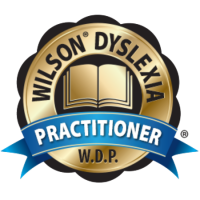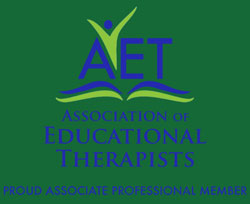Suggestions to make reading more enjoyable
Dear Families,
Is it a struggle to get your child to read at home?
Most students are expected to do daily reading and record it in a reading log. The reading is usually considered “free reading”. Required reading assignments can include: Raz-Kids or Accelerated Reader for students who need specific reading practice at home.
Below are some suggestions that may reduce the pressure and actually make reading more enjoyable:

Audiobooks
Audiobooks are a great way to let your learner experience the enjoyment of reading. It is important that your learner point to the words and read along with the audio to build reading fluency. Ask your learner’s teacher to provide a set of audiobooks for home use or direct you to the nearest resource.

Impress Reading
Impress Reading is a simple technique that gives learners the opportunity to see, touch, hear, and say the words in the context of reading. Just doing this 10 minutes a day can increase reading fluency and build comprehension.
It begins by having your learner use his or her finger to point under each word as the adult points above each word simultaneously.
Both the adult and learner read the passage fluently and in synchrony together. If your learner comes to a word that he or she does not know, be sure to read it together.
Avoid focusing on mistakes and continue reading with fluency and expression while pointing.

What’s Sugar Got to Do with Learning?
Did you know that the average person consumes approximately 153 grams of sugar per day, and yet the recommended amount is less than 25 grams for children and up to a maximum of 37.5 grams for adults—sounds shocking right!
Many children are addicted to sugar, eating it regularly instead of the important nutritious foods.
Now the big question is… What does eating sugar have to do with learning? …Well… everything!
According to a recent publication by Joan M. Smith, Ed.D. the symptoms caused by sugar allow for the release of pro-inflammatory stress hormones which lead to brain inflammation which causes the neurons in the brain to fire more slowly. Symptoms that may be observed include:
- Slow or delayed response time
- Feeling unusually disorganized.
- Difficulty with concentration.
- Difficulty with word retrieval.
- Short attention span.
- Sporadic memory problems.
- Getting bogged down on doing routine tasks.
- Difficulty with doing multiple tasks at a time.
- Trouble with verbal and visual memory.
- Feeling exhausted.
- Mental fogginess aka ‘brain-fog’
- Confusion in learning new skills.
Specialists who work with children and adults will recognize most of these symptoms as being consistent with learning disabilities and head injury clients.
The difference is that with ‘brain-fog’, the symptoms are inconsistent–some days can be especially bad and others are not so much.
Sugar also affects the ability to pay attention and contributes to symptoms such as being overactive and irritable which can intensify ADD/ADHD symptoms.
Now I am NOT suggesting that sugar be completely eliminated because that is impossible…Sugar is everywhere!
For example, naturally occurring sugar is found in unprocessed foods such as: milk, fruit, and even some vegetables and grains and this sugar is considered healthy.


Food manufacturers may add both natural sugars (for example, fructose) and processed sugars such as high-fructose corn syrup to processed foods and drinks which is not so healthy.

16 oz. sweetened Chai = approximately 42 grams of sugar

16 oz. popular sports drinks = 58 grams of sugar

Be aware of the amount of sugar your kids drink

Peanut Butter and Jelly Sandwich
2 slices of wonder bread equal 4 grams of sugar
4 tablespoons of strawberry jam is 52 grams of sugar
2 tablespoons of Skippy Peanut Butter is 4 grams of sugar
The whole sandwich equals 60 grams of sugar, which is equivalent to 4 Twinkies!
Graham Crackers
4 squares equal 8.8 grams sugar
Calorie count 120
One Packaged Fruit Cup is equivalent to 8 Graham Crackers
Children ages 2 to 18 should eat or drink less than six teaspoons of added sugars daily, according to the scientific statement recommending a specific limit on added sugars for children, published in the American Heart Association journal Circulation.
Six teaspoons of added sugars is equivalent to about 100 calories or 25 grams
Sugar is not the only thing that causes ‘brain-fog’—there are other environmental factors that can wreak havoc as well:
- Stress
- Sudden illness
- Medication
- Allergies to food and other
- Anesthetics
- Environmental toxins
- Lack of sleep
- Skipping meals
However, if cutting down on sugar is proven to lead to better focus, increased response time, improved sustained attention span, increased fluency, and improved memory retrieval, then isn’t it worth a try?
4 Ways to Maximize Learning

1. Eat to maximize brain function.
Provide high protein snacks with fruit. Protein consumption varies for each of us. As a simple start, multiply .08 (1.2 grams of protein) by every 2.2 lbs. of body weight. This will be your recommended daily intake. Increase or decrease this amount based on the individual’s activity level (see suggested recipes below).

2. Eliminate stressors
The first step is to understand how stress works. It’s not the events that do the harm; it is how we respond and feel about them. HeartMath and Emwave Personal Stress Reliever-Coherence Coach are effective tools for home use to reinforce stress relieving techniques.
a) Progressive Muscle Relaxation involves playing soft music while the therapist reads using progressive relaxation messages which are appropriate for the Individual in the dialogue.
b) Our mantra when working with students with these symptoms begins with: Breath, relax, drink water. Just this simple sequence begins the recovery process and teaches the importance of gaining control over stress and emotion.


3. Replace video games and screen time with physical activity
Physical activity leads to helping children have longer attention spans which promotes better performance in school. It also develops motor skills and builds strength, flexibility and endurance.

4. Get plenty of water.
The Institute of Medicine offers recommendations that children ages 4 to 8 drink about 2 quarts a day. That amount goes up as they get older. When children are outside and it’s hot and humid—they need to drink more.


Brain-Builder-Snack
Ingredients:
1 C raw organic sunflower seeds
1 C raw organic almonds
1 C sea palm (roasted in oven at 300 degrees for 10 minutes until crispy and easily crumbled)
1 t Tamari
Dry roast (no oil) sunflower seeds in an iron pan, stirring frequently until you can smell the oils. Place in a bowl. Dry roast almonds until you can smell the oils. Add to bowl. Crumble sea palm into a bowl.
More Information for Brain Friendly Food
http://www.webmd.com/parenting/features/brain-foods-for-children#1
http://www.foodforthebrain.org
https://bebrainfit.com/brain-foods/




